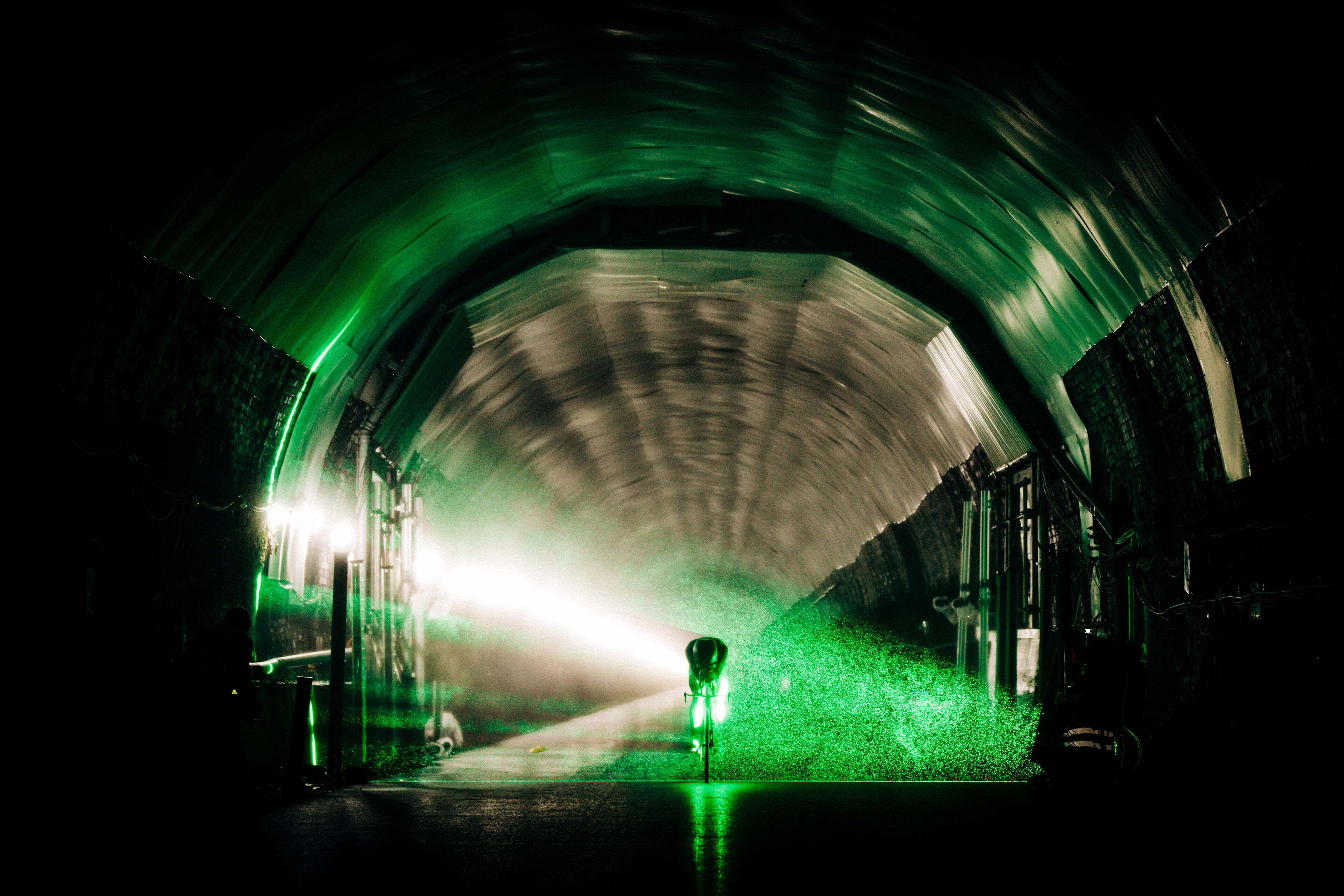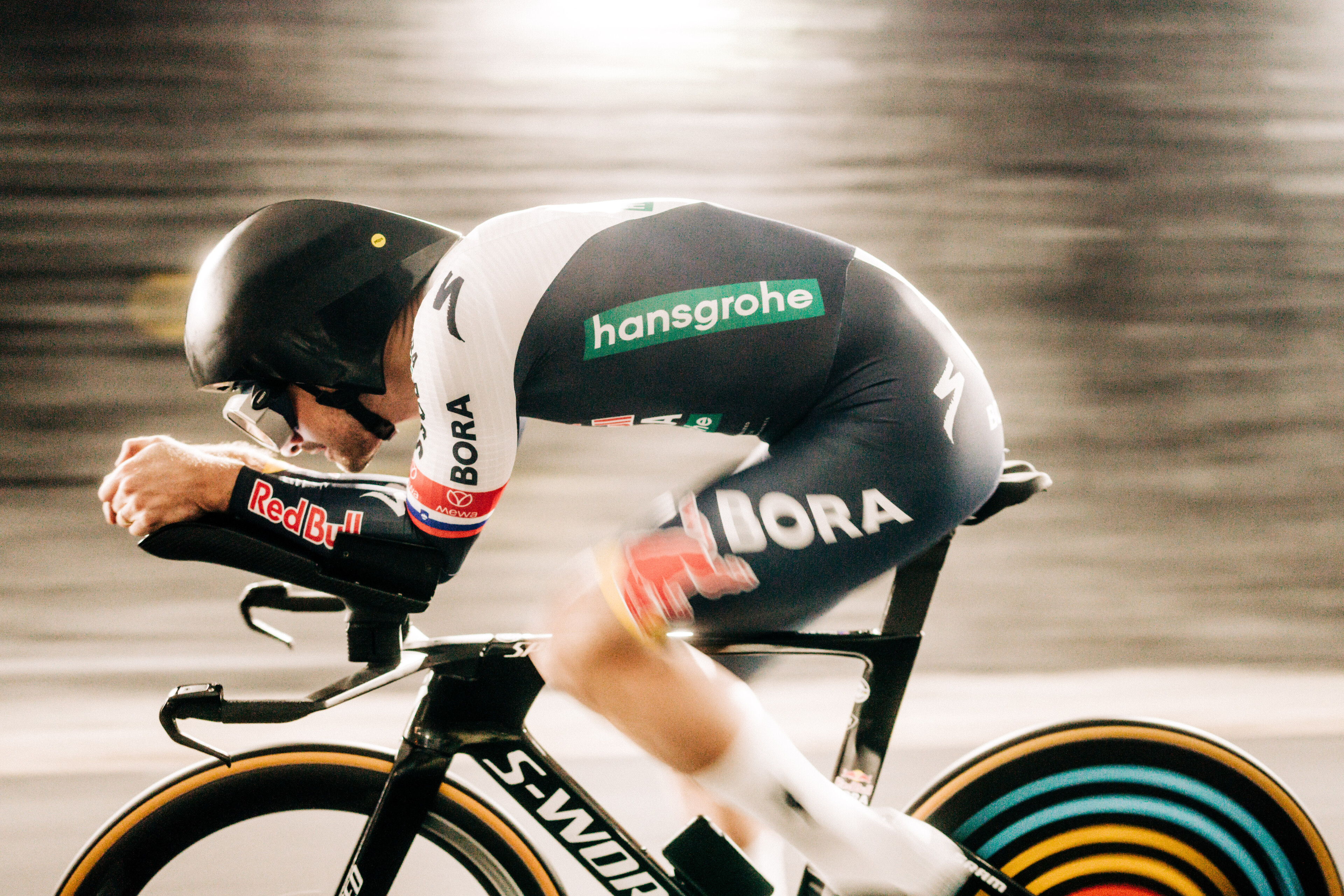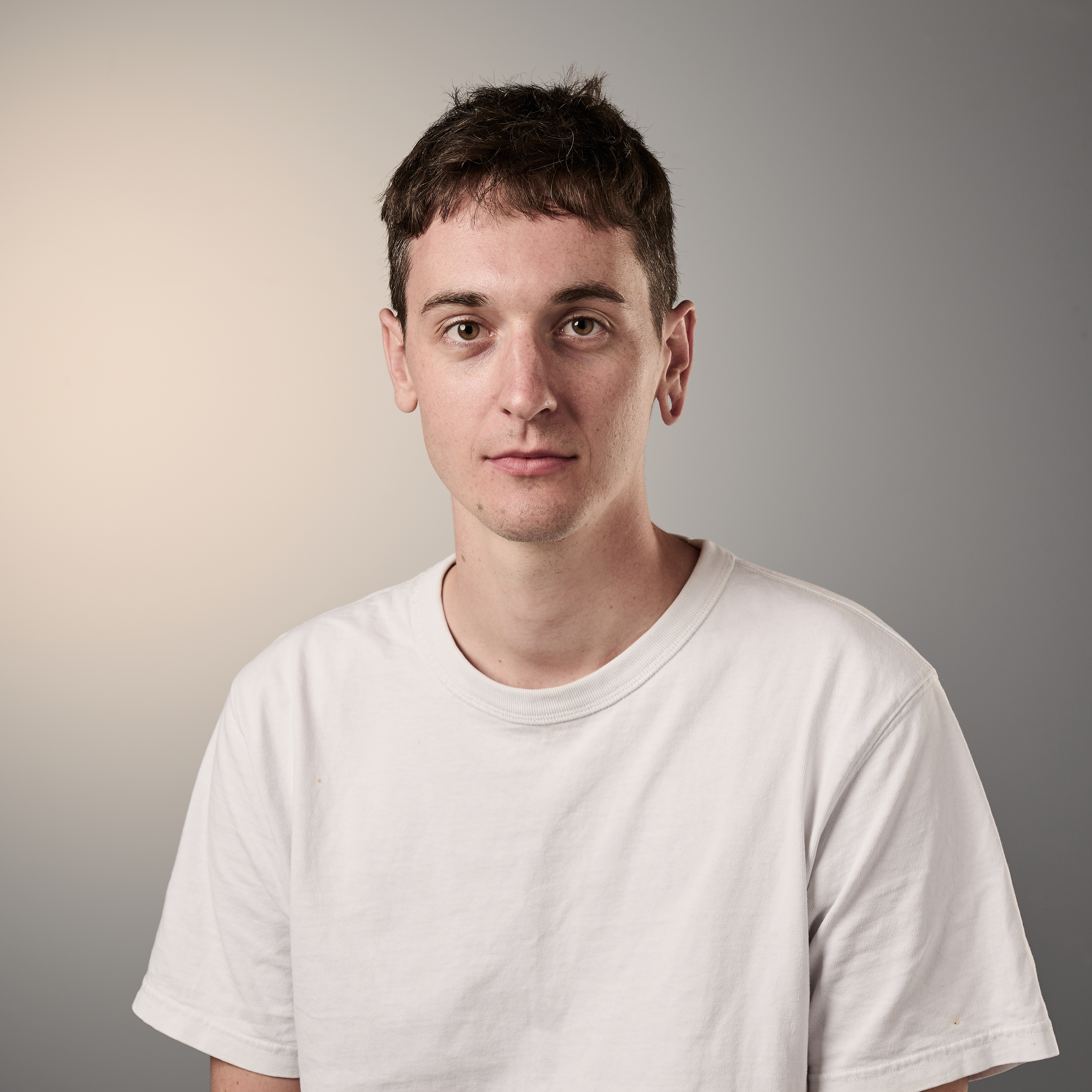Lasers, bubbles, and bats: I spent a day watching Red Bull-Bora-hansgrohe test inside an abandoned railway tunnel
The WorldTour squad are finding gains at the Catesby Tunnel, their now not-so-secret weapon


“Have you had the laser safety briefing?” a man in a hi-vis vest asks me. Having arrived late and flustered, I’m certain I’ve misheard, so I ask him to repeat the question. “The laser safety briefing,” he says, the words clear as day. “Follow me.”
We walk across a concrete floor into an office, where he hands me a document in a plastic sleeve. Immediately, my eyes are drawn to the blood red warning symbols, and a set of very important instructions; the laser I will come across today is a ‘level four’, and I absolutely must not look at it without tinted, wraparound glasses, a pair of which has just been thrust into my hands.
“It’s so strong it could light a cigarette,” I overhear someone say. Where am I? What have I gotten myself in for? The fear only subsides half an hour later, as I watch Red Bull-Bora-hansgrohe’s chief engineer Dan Bigham hurtle burn-free through a green laser beam on his bike, again and again and again. Maybe I’ll be fine, after all.
I’ve come to the Catesby Tunnel, a 2.7km-long stretch of abandoned railway buried beneath the Northamptonshire countryside in England's Midlands. Built in 1897, the tunnel was cast aside in the 1960s, and now hasn’t seen a train in almost 60 years. Its entrance today is a boxy, metal warehouse, accessible by two roller shutter doors that make the state-of-the-art aero testing facility inside look like the back of a Sainsbury’s supermarket.
Grasping my safety glasses, I’m led to another office, this time by Ben Thompson, who works here at the tunnel. Sensing my impatience to see inside, Thompson offers me a peek at the CCTV footage, pointing at a small black-and-white tile of Bigham’s silhouette moving in the shadows. It’s a spooky image, made even more so by the mention of a bat colony that lives at the far end of the tunnel. Sightings, I’m told, are rare. Of the 10 people who have ever worked here, only two reckon they’ve seen a bat.
The safety briefing continues. Thompson hands me a hi-vis jacket of my own, and deals me a few more warnings; the tunnel will be dark, damp and cold – it’s kept at a constant 10.5°C – and I am not to wander off by myself once I go in. I nod along like a schoolboy nervous of being told off. A small van then arrives to take me through the portal. I clamber into the front seat, inhale deeply through my nose, and we roll slowly into the darkness.

For years, the Catesby Tunnel has welcomed cars much faster than this one. Its capacity as a testing site, thanks to its controlled environment and smooth, arrow-straight road, was first twigged by the motorsport industry, who have been coming here since it opened in 2021. The fastest speed recorded by a vehicle in the tunnel since then is apparently over 200mph. I notice a cluster of large blue barrels, each filled with gravel, placed at the end of the road – a barricade in case something goes wrong.
The latest race content, interviews, features, reviews and expert buying guides, direct to your inbox!
Fortunately, there’s no such danger for Bigham today. When we pull up to see him, a few hundred metres into the tunnel, he’s standing beside his bike and talking with the two laser engineers. Bigham’s first time here was four years ago, when he rode into the wall and broke four metatarsal bones in his foot. “I held it up, though,” he smiles. As he remounts his bike, I make sure to stand on the road’s gravel shoulder, well out of the way. The sun is shining outside, but it’s so damp in the tunnel I can hear water running down the walls.
Today’s test is both fairly straightforward and potentially ground-breaking. Bigham and his team are measuring real-life computational fluid dynamics (CFD), a digital method for tracking airflow over an object, in this case a rider and his bike. To do this in real life, they’re using particle imaging velocimetry (PIV), beaming a laser onto a screen of bubbles – yes, bubbles – and capturing with eight cameras the way they dance in the wake of Bigham riding through them. They’ll then compare the findings to the digital model, and iron out any creases to make their CFD calculations more reliable. “We’re sharpening our tools,” Bigham explains. This, in turn, will allow the team to carry out accurate CFD tests on their riders all season, without the need for them to be there in person.
“CFD is an arbitrary environment – it’s maths and a computer,” Bigham says. “What [being here] enables us to do is get that correlation, and it’s not really ever been done in the world of cycling, as far as I’m aware.”

Of course, everything’s a lot more technical and detailed than at first glimpse. Take, for example, the bubbles; the ones Red Bull-Bora-hansgrohe are using are filled with helium, have a soapy film, and are released from 12 ‘free-standing wings’ (see: bubble machines) that form each bubble at exactly 0.3mm diameter. When Bigham rides through them, their movement is measured in a similar way to Hollywood cinema motion tracking, just with hundreds of thousands more dots. The budgets must be similar to Hollywood, too; I count around 25 litres of industrial bubble fluid, which surely can’t come cheap.
So why have Red Bull-Bora-hansgrohe come to Catesby to do this? Aren’t wind tunnels and velodromes enough for this sort of thing? Bigham, a former motorsport engineer, now an Olympic silver medallist, sees all these facilities as part of a wider picture of testing. The tunnel, he explains, is a “really, really good tool”, one he expects only his team is using.
“We’re always trading off between realism and measurement precision,” Bigham says. “The more real you get, like field testing out in the open world, the less precision of measurement you have. And as you walk all the way to CFD, you can be incredibly precise with your measurement, but it’s not real, it’s on a computer. Everything blends that spectrum.”
The Catesby Tunnel, he adds, “sits high” on both the measurement precision and realism metrics. Here, testing guinea pigs like Bigham can ride naturally on their bikes, while also controlling variables like road surface, gradient, and yaw angle. As the space is enclosed, there are also no crosswinds; ask Jai Hindley or Florian Lipowitz, both of whom have been here this year on previous visits. “It’s a bit contrived,” Bigham says of the setting, and I gather that’s a good thing for this type of repeat testing.

There’s no time wasted in gathering the data today. Dressed in a skinsuit with Slovenian trim – property, I assume, of Primož Roglič – Bigham will do around 100 runs through the laser-lit screen of bubbles. His safety, too, has been considered; he wears a bug-eyed pair of welder’s goggles that make him look like a blue bottle fly.
I’m amazed he can see at all. It’s so dark that I can barely see beyond the shimmering green hue of the laser. A call of “incoming!” gives me a three-second warning before Bigham barrels through, enough time to get out of the way and hug the side of the tunnel. “Don’t touch the walls,” one of the engineers calls across. Too late. A streak of 100-year-old soot stains the skin of my palm.
The mess is nothing compared to Bigham, though. In the name of science, he brought two cans of black chalk spray to the tunnel this morning; one has since been emptied over his shiny Specialized S-Works time trial bike, and he seems to be wearing the contents of the other – it looks as if he’s ridden through a coal mine. I begin to ask about the damage to the bike, but I’m reassured it will all wash off easily. Good news for Finn Fisher-Black, then, whose name is stickered on the frame.

As Bigham returns to testing, riding up and down the same 100m stretch, blasting through the bubbles, I ask Specialized aerodynamicist Lionello Bardina, who flew in specially from California, about the chalk spray. To make the testing reliable, he explains, you can’t have any glossy surfaces. He offers me an analogy: “If you take a picture with your phone camera of, let’s say, a car, you see yourself in the reflection, right? We don’t want the data to be the reflection.
“By changing the surfaces to be as non-reflective as possible, that gives you a lot more confidence that you're not capturing reflections, you’re capturing the true data.”
Craving natural light, I leave Catesby after six hours with Red Bull-Bora-hansgrohe. In that time, Bigham has completed most of his 100 test runs, undergone a full-body 3D scan for standardisation, and fuelled on a lunch of chicken tikka sandwiches and tuna paninis, supplied by the team’s technical performance manager, Jonny Wale.
A month later, I log onto a Zoom call to get the debrief from Bigham. Did the testing match up with his existing calculations? “It definitely correlates,” he says. “Everything makes sense, but it’s in the finer details.”
Those details won’t be combed through until January or February, before the new season starts. The pursuit of gains won’t stall in the meantime, though. Between now and then, Red Bull Bora-hansgrohe will undergo up to 10 days of testing a month, including bringing Lipowitz back to Catesby, and fine-tuning rider positions on the velodrome in Mallorca.
Bigham has also just spent a week in California, where, for 12 hours a day, he sat inside Specialized’s wind tunnel – the brand calls it their ‘win tunnel’ – welcoming rider after rider, among them marquee new signing Remco Evenepoel.
“Riders are becoming harder and harder to get hold of,” Bigham says. “They all want to go to altitude camps and train. They don’t want to come to wind tunnels.
“CFD is incredibly powerful in that respect, in that we can run as many different runs as we want on one rider’s actual body position [on a computer], but we need to just have absolute trust in that tool first.”
The laser test, he says, marked a big step in finding that trust. “I know it will help us. It’s taken a lot of work to just sit here today and get to this point, and there’s a lot of work still to come on the entire project, just to be sure, but it’ll bring performance, and I think that’s the kind of things that we’re willing to tackle within Red Bull.”
After a day of lasers and bubbles, I wonder where the cycling world will turn next in its quest for performance. What if there’s another tunnel, or the remains of a Stone Age velodrome, hiding beneath the hills of Northamptonshire, a testing Atlantis waiting to be discovered? No doubt Bigham will be the first to find it. And whatever it is, I look forward to reading the safety briefing.

Tom joined Cycling Weekly as a news and features writer in the summer of 2022, having previously contributed as a freelancer. He is fluent in French and Spanish, and holds a master's degree in International Journalism. Since 2020, he has been the host of The TT Podcast, offering race analysis and rider interviews.
An enthusiastic cyclist himself, Tom likes it most when the road goes uphill, and actively seeks out double-figure gradients on his rides. His best result is 28th in a hill-climb competition, albeit out of 40 entrants.
You must confirm your public display name before commenting
Please logout and then login again, you will then be prompted to enter your display name.